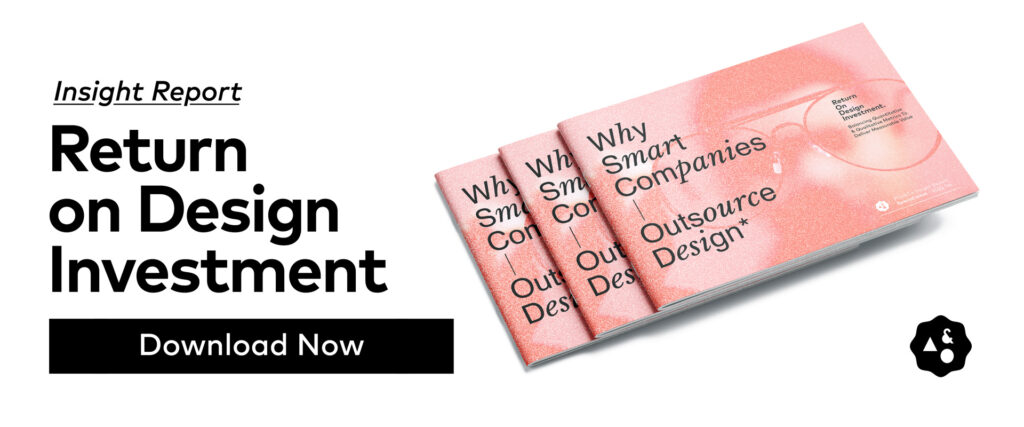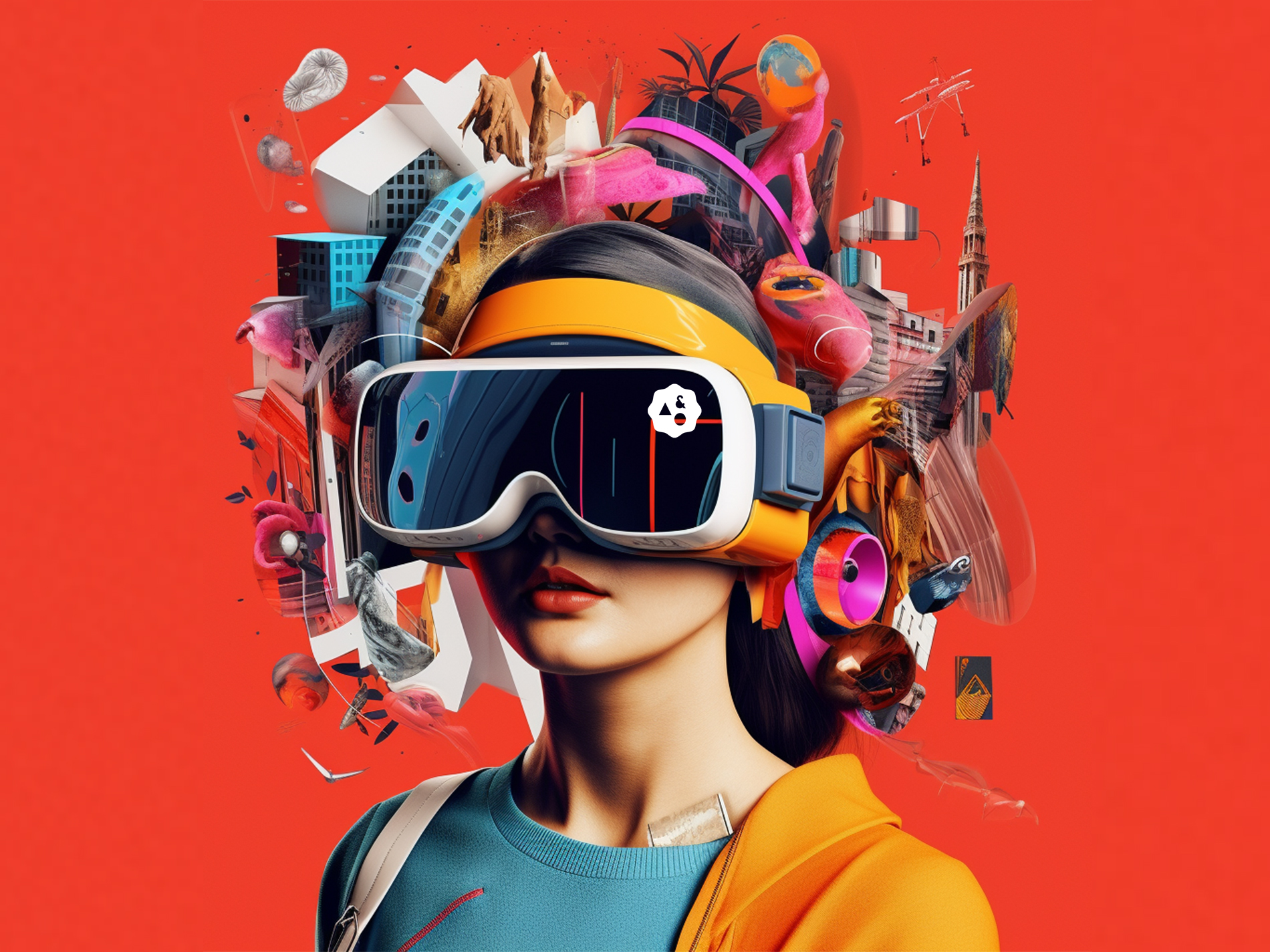As AI progresses rapidly, the design field faces transformation. Will designers become obsolete? Contrary to popular belief, AI won't replace humans in creativity. Instead, it empowers designers, enhancing skills and efficiency for innovation. Balancing automation and human ingenuity is key. AI integration offers opportunities for valuable designs, benefiting businesses and users. Embracing AI and new tech enables designers to unlock creativity, ushering in a new era of excellence.
For a long time, the design profession has placed considerable emphasis on 'expertise' and advanced professional tools, such as parametric CAD, Adobe Creative Suite, and advanced real-time rendering software. Consequently, a certain portion of the design industry has become proficient in these advanced tools and has become known as 'production specialists' (i.e. CAD jockeys or similar). Meanwhile, a key value of the design profession—front-end strategy, our ability to think laterally, connect the dots, and develop strong directions for businesses, products, and services—has been undervalued and underutilized. Just imagine what we could achieve if we were liberated from the monotonous production work and could focus on problem-solving: providing pure direction and defining innovative problem-solving approaches for complex topics.
Artificial Intelligence (AI) is transforming the design profession in various ways, and its impact is only going to increase in the coming years. This presents both challenges and opportunities for designers, design agencies, and the brands they work for. The design industry has always been about creativity and innovation, but AI is augmenting the design process and making it more efficient, enabling designers to focus on their strengths, and creating new possibilities for personalized designed products and experiences. Here, we explore the many ways AI is impacting the design profession today, and discuss their potential benefits for designers and businesses.
Design Strategy Will Find Increasing Demand — and Prove Ability to Act on It
The growing prevalence of AI-powered design tools is driving companies to seek out design strategy experts who can effectively navigate this evolving landscape. These experts will play a crucial role in helping organizations leverage the potential of AI in design to their advantage. Companies, especially those without an in-house design team, will increasingly turn to small and agile teams like Play&Co that are adept at embracing new technologies and tools. These teams offer high-value services, both as collaborators to existing design teams and as standalone design providers.
On the other hand, larger design teams should capitalize on their strategic strengths to remain competitive. While adopting AI-powered design tools can bring numerous benefits, they should be cautious of potential organizational disruptions that may arise during the transition. It is important for larger teams to carefully manage the implementation of these new tools to ensure a smooth integration with their existing workflows and structures. By doing so, they can effectively harness the power of AI while minimizing any potential adverse effects on their team dynamics.
Building Brands Gets Easier
In the fiercely competitive design industry of today, establishing a strong brand presence is crucial for success. Achieving fame and notoriety requires strategic efforts to distinguish oneself from the crowd and attract high-value clients. Designers can leverage various platforms and opportunities to build their brand, such as utilizing social media platforms, showcasing their work in design forums, and actively participating in design events. These activities serve as effective means to showcase their skills, gain recognition, and engage with potential clients and peers in the industry.
Furthermore, the integration of AI tools offers designers significant assistance in building their brand and streamlining their workflow. Tools like ChatGPT and Midjourney can automate repetitive tasks that consume valuable time, such as social media posting, email campaigns, and portfolio updates. By automating these tasks, designers can focus more on their creative work, allowing them to invest their time and energy in developing innovative designs and delivering exceptional results to their clients. The use of AI tools not only increases efficiency but also provides designers with more opportunities to engage with their audience and enhance their brand visibility in the ever-evolving digital landscape.
Foster The Creative Community with Collaboration
The creative community serves as the lifeblood of the design industry, and AI has the potential to foster creativity by introducing new tools and platforms for collaboration and co-creation. Platforms such as Gravity Sketch and Vectary are examples of how AI can enable innovative possibilities for collaborative design and co-creation. Furthermore, the future holds even more promise with the emergence of configurators and interactive collaboration tools that are yet to be developed. These forthcoming tools have the potential to unlock even greater levels of innovation in the design process.
Presentations Will Become More Interactive, Immersive And Inspirational
In the near future, we can expect a significant shift in presentations as we break away from traditional PowerPoint slides and embrace the power of AI tools. This transformative change will enable presentations to become more interactive, immersive, and inspirational. Instead of static slides, we will explore the possibilities of augmented reality (AR) and virtual reality (VR), allowing audiences to step into a simulated environment that enhances their understanding and engagement.
With the aid of AI, simulations will bring concepts to life, enabling dynamic experiences that go beyond mere words or static visuals. Advanced virtual mockups will provide realistic representations of ideas and products, allowing stakeholders to explore and interact with them before they come to fruition. These digital simulations and mockups will facilitate better comprehension and decision-making, revolutionizing how presentations are conducted.
Automating Repetitive Tasks (Bye Bye, RSI)
AI automation offers significant benefits for designers by streamlining repetitive tasks such as administrative work, data entry, and documentation. This frees up valuable time for designers to focus on their creative work, leading to increased efficiency, productivity, and a reduction in repetitive stress injuries. Automation extends to coding, design specification documentation, presentation building, and website frameworks, revolutionizing these areas. AI tools learn individual styles, preferences, and needs, enabling the instant creation of beautiful and impactful presentations. Additionally, automated coding and website frameworks save time, allowing designers to concentrate on more complex and creative aspects of their work.
In summary, AI's automation capabilities in the design industry enhance efficiency, productivity, and well-being. By automating repetitive tasks, designers have more time to dedicate to their creative endeavors, resulting in improved output and reduced strain. AI-driven automation transforms coding, documentation, presentation building, and website development, facilitating smoother workflows and empowering designers to focus on innovative and complex design challenges.
CAD, Parametric Modeling, And (Real-Time) Generative Design Are Growing Rapidly
AI-powered design tools, including computer-aided design (CAD), parametric modeling, and generative design, are poised for rapid growth in the coming years. These tools present designers with exciting new possibilities, enabling the creation of intricate geometries and forms that were previously unattainable manually.
We are currently witnessing a convergence of graphical, 3D, rendering, and augmented reality platforms, leading to transformative advancements. Graphical applications like Procreate now incorporate 3D painting capabilities, Blender offers a comprehensive 3D creation pipeline (as a free and open-source tool), Gravity Sketch allows designers to step away from the desk and engage in immersive experiences, while parametric software platforms with algorithmic capabilities facilitate instant updates in complex building information modeling (BIM) for engineers. The future holds even more promise, as AI is expected to catalyze a new generation of creative tools. These tools will become increasingly powerful and intuitive, empowering designers to surpass creative and technical boundaries in unprecedented ways. This potential renaissance in design expression, purpose, and problem-solving could have a transformative impact, similar to how Zaha Hadid revolutionized architectural expression.
Real-Time Rendering Is Evolving Into Real-Time Animation
Advancements in technology and PC performance are propelling real-time rendering into the realm of real-time animation and movies. This evolution opens up fresh opportunities for designers, allowing them to craft immersive experiences and visualizations in real-time. In addition, astute designers will leverage these new media to effectively narrate and validate concepts for products and services, surpassing previous capabilities.
This presents an opportunity for designers to not only enhance their own work but also potentially compete with marketing teams in delivering compelling narratives and validating ideas.
AR Will Increasingly Become Core To The Process
Augmented reality (AR) is rapidly emerging as a fundamental component of the design process, unlocking a plethora of new possibilities for visualization and prototyping. Designers can leverage tools like Gravity Sketch and Vectary, which are already harnessing the power of AR, to create and manipulate 3D models in real-time. These tools provide designers with an immersive and interactive environment where they can visualize their designs, explore different perspectives, and make instant adjustments. By seamlessly integrating AR technology, designers can gain a deeper understanding of how their creations will appear and function in the real world, enhancing their ability to refine and iterate designs efficiently.
In addition to the existing AR-powered design tools, there is great potential for even greater innovation on platforms like Miro. Miro, with its collaborative digital whiteboard, holds the promise of augmenting the design process further. By incorporating AR functionalities into platforms like Miro, designers can envision a future where they can collaborate remotely in a shared augmented space. This augmented collaboration allows for real-time visualization and discussion of design concepts, with the ability to annotate, manipulate digital assets, and provide immediate feedback. Such advancements break down the barriers of physical distance and enable cross-functional teams to work seamlessly, driving innovation and fostering a more inclusive design process.
Augmenting The Creative Process
In the realm of idea generation and brainstorming, AI-powered tools such as MidJourney and others are proving to be invaluable for designers. These tools leverage the power of artificial intelligence to analyze vast amounts of data, trends, and user insights, providing designers with a wealth of inspiration and valuable information. By analyzing emerging trends, consumer preferences, and market demands, AI can assist designers in identifying untapped opportunities and developing innovative solutions to complex problems. This collaboration between human creativity and AI-driven insights can lead to breakthrough ideas and transformative designs that resonate with target audiences.
However, it is important to note that while AI-powered idea generators can catalyze the creative process, the most successful design teams will go beyond mere prolific output. They will leverage specific tools and frameworks to ensure that their creative work meets a defined need and aligns with the given brief. Implementing design thinking methodologies, such as empathizing with users, defining problem statements, ideating and prototyping, and testing and iterating, allows teams to approach the design process systematically. By employing these frameworks, designers can ensure that their creations are not only innovative but also practical, relevant, and effective in solving the identified problem or meeting the desired objectives.
General Design Process Efficiency Improvements
AI can play a crucial role in enhancing the overall efficiency of designers by automating repetitive tasks and streamlining workflows. Tasks such as image resizing, color selection, and text formatting, which tend to be monotonous, can be automated effectively using AI-powered tools. By relieving designers of these routine activities, AI enables them to allocate more time and energy to focus on the more creative aspects of their work.
Moreover, AI can optimize design workflows by fostering improved collaboration and minimizing errors. For instance, AI-powered design tools can perform automated checks to ensure accessibility compliance, guaranteeing that designs are inclusive and user-friendly for individuals with disabilities. This functionality not only saves time but also ensures that designers consider the diverse needs of their target audience.
Additionally, AI can contribute to streamlining the design process by swiftly assessing the manufacturability of a product or concept. Advanced versions of tools like Finite Element Analysis (FEA) can be integrated with AI, enabling instant evaluations and suggestions for design modifications. This AI-powered analysis allows designers to identify potential improvements in manufacturability, build efficiencies, and other related factors, making AI an invaluable design consultant and configurator. With AI's ability to provide real-time feedback and recommendations, designers can achieve more refined and practical designs while reducing costly iterations.
The Rise of Digital Twins
Digital twins serve as invaluable tools for designers as they provide virtual replicas of physical products, machines, or systems, allowing for thorough simulations and testing in a virtual environment prior to the manufacturing phase. To further enhance the capabilities of digital twins, AI plays a crucial role in improving their accuracy and predictive abilities. By harnessing AI technology to analyze data collected from sensors and various other sources, designers gain access to valuable insights that enable them to make informed decisions and develop superior designs. AI algorithms can identify patterns, detect anomalies, and uncover hidden correlations within the data, enabling designers to optimize their designs and address potential issues before they arise in the physical world.
One of the significant advantages of digital twins is their ability to foster cross-functional collaboration. In a shared virtual environment, designers, engineers, marketers, and other stakeholders can come together to collaborate seamlessly. This collaborative setting breaks down silos and facilitates effective communication and idea exchange among different teams. Designers can receive real-time feedback from engineers regarding the feasibility and performance of their designs, marketers can provide insights on user preferences and market trends, and stakeholders can contribute their expertise to ensure that the design aligns with business goals and customer needs. By leveraging digital twins and AI-powered collaboration, designers can create designs that are not only aesthetically pleasing but also optimized for functionality, manufacturability, and overall success in the market.

Personalization Takes Off…Further
AI has the remarkable ability to enable designers to create personalized products, services, and experiences that cater to the unique needs and preferences of individual users. By leveraging AI to analyze vast amounts of data on user behavior, designers can gain valuable insights into user preferences, habits, and interests. This data-driven approach allows designers to create designs that resonate with users on a personal level, delivering a more engaging and tailored experience.
For instance, AI-powered design tools can assist designers in generating customized product recommendations. By analyzing user data, such as purchase history, browsing patterns, and demographic information, AI algorithms can identify patterns and make predictions about the types of products or features that a particular user might prefer. This enables designers to create personalized recommendations that cater to the specific tastes and preferences of each individual user. Similarly, AI can be utilized to personalize marketing campaigns, allowing designers to target specific user segments with tailored messages and content that align with their interests, maximizing the chances of engagement and conversion.
Measuring RODI Comes of Age
Measuring the return on design investment (RODI) has traditionally been difficult for designers, as it can be challenging to quantify the impact of design on business outcomes. However, AI can help designers measure RODI more accurately by analyzing data on user behavior, sales, and other metrics. By using AI-powered analytics tools, designers can gain insights into the effectiveness of their designs and make data-driven decisions to improve their impact on business outcomes.
The impact of AI on the design profession will be significant and will continue to evolve as technology advances. Designers who are open to embracing new tools and technology will find increasing demand and opportunities for their skills. The use of AI will automate repetitive tasks and augment the creative process, freeing designers to focus on more meaningful work. However, it is important to note that creativity and the human touch will remain critical to the design process. The success of these shifts will ultimately depend on the meaningful use and adoption of these tools by designers. The value of design will become more apparent as the general quality of work increases, prices become more competitive, and turn-around times decrease. Industrial design will potentially 'resurge' or maintain value due to the knowledge gap for production of tangible products. As the field continues to evolve, it will be essential for designers to stay up-to-date with the latest technology and tools, while also maintaining their critical thinking, creativity, and problem-solving skills.




